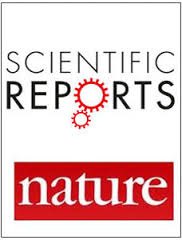Combination therapy remains one of the most promising and intensively developed direction in cancer treatment. This study is aimed to combine and investigate the anticancer properties of silver nanoparticles (NPs) and Amanita muscaria mushroom in gel formulation. For this, hyaluronic acid was used as gel-forming agent, whereas Amanita muscaria extract was used as capping agent during silver and ultrasmall iron oxide (MAg) NPs synthesis. Amanita muscaria compounds formed NP’s surface layer and contributed anticancer properties, whereas silver NPs contributed anticancer, fluorescence and photoactive properties to the gel. Physicochemical characterization included X-ray diffraction (XRD), microscopies (SEM, cryo-SEM, TEM, confocal fluorescence), spectrofluorometric method, thermogravimetric analysis (TGA), dynamic light scattering (DLS) techniques, energy dispersive (EDS), Fourier transform infrared (FTIR) and ultraviolet–visible (UV-Vis) spectroscopies, zeta-potential and rheological measurements. Microstructure analysis of hyaluronic acid/MAg NPs gel was performed by cryo-SEM technique. We showed that hyaluronic acid is a perfect gel-forming agent from both biomedical and technological points of view. It is well-mixed with MAg NPs forming stable gel formulation; high homogeneity of hyaluronic acid/MAg NPs gel was shown by SEM EDS elemental mapping. Microstructure of the gel was found to be highly ordered and consisted of domains from perforated parallel tubular structures. This finding expanded our understanding of gels and broke the stereotype of gel structure as chaotic network of fibers. Cytotoxicity studies performed on 2D and 3D HeLa cell cultures pointed to a high potential of hyaluronic acid/MAg NPs gel for local treatment of cancer. Cell response was found to be significantly different for 2D and 3D cell cultures that was related to their different cytoarhitecture and gene expression. Thus, the results of the cellular spheroids viability showed that they were significantly more resistant to the cytotoxic action of MAg NPs and their gel formulation than 2D cell culture. Hyaluronic acid used as gelling agent in gel formulation was found to increase an effectiveness of active components (MAg NPs, Amanita muscaria extract) probably improving their transport inside HeLa spheroids.
